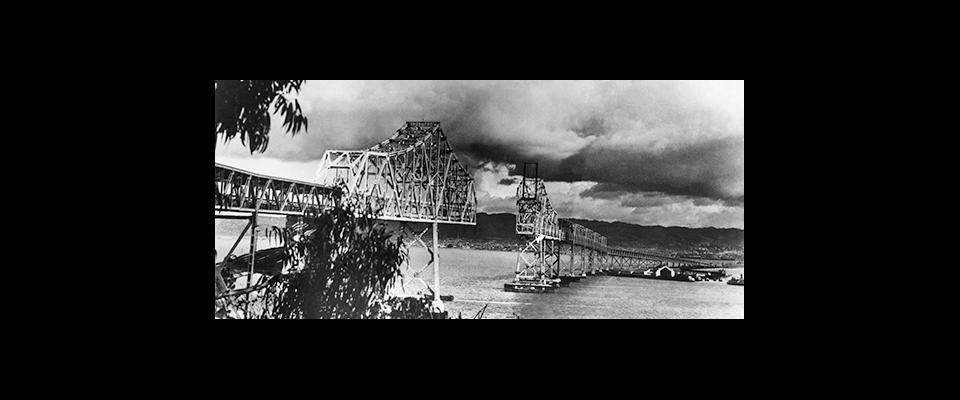In the Summer Issue of California, due in mailboxes around June 18, we have some breathtaking photos by Joe Blum of the new East Bay span of the Bay Bridge and the brave men and women building it. We also have some equally breathtaking opinions on the structural integrity of some of the steel in the $6.8 billion span. Those who have been following San Francisco Chronicle reporter Jaxon Van Derbeken, M.J. ’87, know that a third of the anchor rods that affix the shear keys (seismic support devices) to the deck have fractured.
In our story, Thomas Devine, professor of materials science and engineering, proposes two possible reasons for the fracturing: hydrogen embrittlement and stress corrosion cracking. Tests are needed, he adds, to determine which it is.
So, what are they testing? Well, you may want coaching from the nearest engineer to understand some of it, but here’s the scoop.
“Yield strength,” says Professor Devine. If results indicate yield strength greater than 145 KSI (or 145,000 pounds of force per square inch), hydrogen embrittlement generally is the cause. If it’s below 87 KSI, stress corrosion cracking is more likely.
“Tests on the rods indicate a yield strength of 139 KSI, so hydrogen embrittlement is probable,” Devine says. “But there can be two sources of hydrogen in steel. First, it can be incorporated into the steel when it is fabricated or galvanized. Second, it can be generated when steel reacts to the environment, usually due to moisture. It’s not simply rust, but reduction reaction, a process that results in hydrogen atoms being absorbed by the steel.”


















